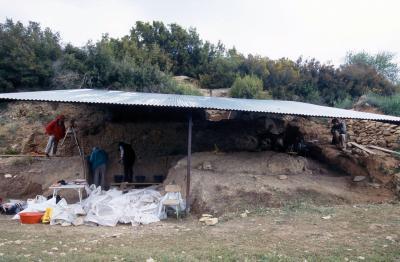Humans of the Upper Palaeolithic Age recycled and repurposed their stone artifacts to be put to other uses, according to a group of anthropologists after examining burnt artifacts found in the Molí del Salt site in Tarragona, Spain.
How could they make that determination? Finding that stone tools during prehistoric times were recycled is not going to be apparent in archaeological records.
"In order to identify the recycling, it is necessary to differentiate the two stages of the manipulation sequence of an object: the moment before it is altered and the moment after. The two are separated by an interval in which the artefact has undergone some form of alteration. This is the first time a systematic study of this type has been performed," Manuel Vaquero, researcher at the Universitat Rovira i Virgili, told Servicio de Información y Noticias Científicas (SINC).
The archaeologists found a high percentage of burnt remains in the Molí del Salt site at Tarragona, which date back to the end of the Upper Palaeolithic Age about 13,000 years ago. Vaquero says "we chose these burnt artefacts because they can tell us in a very simple way whether they have been modified after being exposed to fire."
The results indicate that the recycling of tools was normal during the Upper Palaeolithic Age. However, this practice is not documented in the same way as other types of artifacts. The use of recycled tools was more common for domestic activities and seems to be associated with immediate needs.
Recycling is linked to expedited behavior, which means simply shaped and quickly available tools as and when the need arises. Tools used for killing, like projectile points, were almost never made from recycled artifacts - military spending was always a priority, even in ancient times. Double artifacts, those that combine two tools within the same item, were recycled more often.

Molí del Salt site in Tarragon, Cataluña, Spain. Credit: M. Vaquero et al.
"This indicates that a large part of these tools were not conceived from the outset as double artefacts but a single tool was made first and a second was added later when the artefact was recycled," said Vaquero. The history of the artifacts and the sequence of changes that they have undergone over time are fundamental in understanding their final morphology.
According to Vaquero, "in terms of the objects, this is mostly important from a cultural value point of view, especially in periods like the Upper Palaeolithic Age, in which it is thought that the sharper the object the sharper the mind."
In prehistoric times, sustainable was not a choice
Reusing resources meant that these humans did not have to move around to find raw materials to make their tools, a task that could have taken them far away from camp. "They would simply take an artefact abandoned by those groups who previously inhabited the site."
Vaquero and the team believe that this practice needs to be borne in mind when analyzing the site. "Those populating these areas could have moved objects from where they were originally located. They even could have dug up or removed sediments in search of tools."


